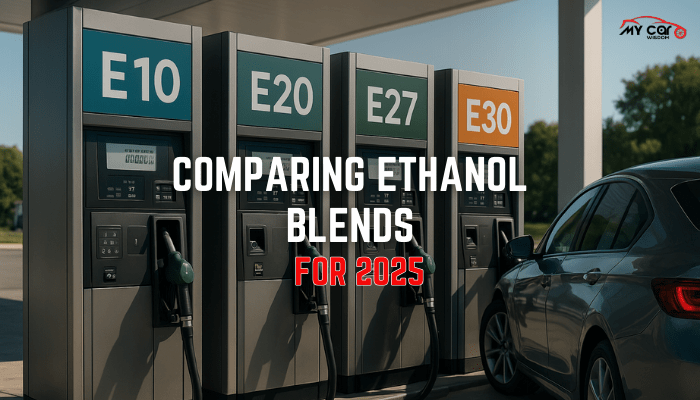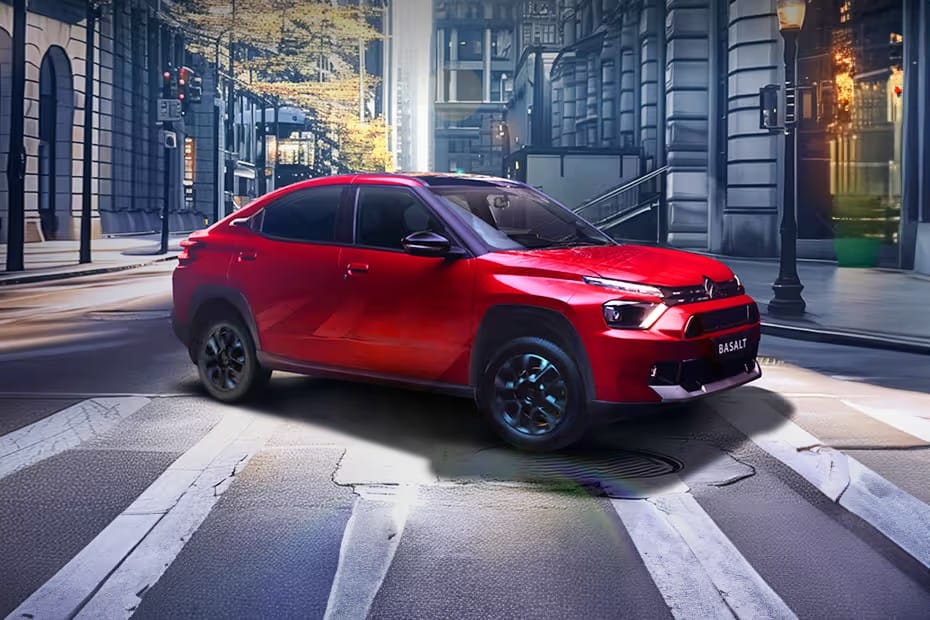When a person is selecting a car, considering aerodynamics — how air flows around the vehicle — is often overlooked. He or she looks for a car that offers good power output and handling, one that is safe and comfortable, but have you ever considered your car’s aerodynamics form sand its effect on your fuel consumption? The aerodynamic design of the automobile, whereby the dynamism of the car or how it deals with air as it continues to move, is an important factor that directly influences the fuel consumption rate.
Manufacturers of automobiles gain since they can help the drivers shave macroscopic drag, hence enhance efficiency and be able to afford fuel. In this blog, I will describe the present knowledge regarding aerodynamics and elaborate on how car shapes affect its fuel consumption.
Understanding Aerodynamics
Aerodynamics is defined as the branch of technology dealing with the motion of air over or with an object. The case in point is with regards to vehicles, where the goal is to minimize the level of resistance—or drag—from air as a car proceeds forward. The thinner the car, the less energy is required to counter the force of air resistance, which is a wider recognition of an efficient fuel consumption.

When a vehicle is in motion, it displaces the air and forces through it a path through which it is moving. These air molecules move along the surface of the car’s body and then join at the end of the car. If a car’s contour is not configured for this smooth flow, then the resistance or drag rises. This leads to high drag forces on the wings, which in turn cause the engine to work harder and therefore use more fuel than is required.
Types of Drag
Drag was categorized in this way, and it was explained that each category has some effect on a car’s fuel economy.
- Form Drag: This is true when the appearance of the car is not one that can be easily aerodynamic, that is, unable to allow free flow of air around it. Just imagine that you are choosing a car with a really boxy shape—this interrupts air flow much more and creates more drag. Fluid efficiency is improved by finer shapes having lower form dragging.
- Skin friction: This type of drag is created whenever air is rubbed on the surface of the car in motion. The coarser it is, then a lot of friction is provided to cause drag on the surface in question. Little texture means less skin friction.
- Induced Drag: Induced drag is mainly associated with the wings of airplanes but can also impact vehicles. It is a byproduct of lift and is reduced in low-riding vehicles.
- Interference Drag: This occurs when airflow around different parts of the car, such as the wheels, mirrors, or lights, interferes with each other, causing turbulence.
Each type of drag adds resistance to the vehicle, reducing fuel efficiency. By minimizing these factors, manufacturers improve the aerodynamics of cars, helping you save fuel.
The Impact of Car Shape on Aerodynamics
It also means that certain models of a certain make will have to be designed and shaped depending on how the air moves over them. Car designers devote much effort to works that can create the ‘forms that make the least resistance, while these forms should also serve a purpose and look good as well.
- Sedans: Sedans are generally sleek with a big, flowing line peripheral to the car’s body that contributes to intense airflow around the car. These are due to their inclined roof and flat rear end, which help to lower total drag. For this reason, sedans have an edge because they have better fuel efficiency compared to cars with larger body sizes.

- Hatchbacks: Hatchbacks tend to be built in a shorter, boxier formation, which creates more drag than sedans. When a car stops suddenly, the air MPS suddenly changes its direction and comes with a force, which results in more drag. However, current designs of hatchbacks have been upgraded from their old models, thus minimizing such a situation.

- SUVs: SUV stands for Sports Utility Vehicle, and the cars of this kind have more ground clearance, which creates problems related to air drag. Moreover, due to their big and massive structure, they have a higher form drag also. Nonetheless, their sales are high because they have relatively less fuel economy because most of them are aerodynamically poor. Others have come up with a system where the body frame of the SUV is more tapered than before in a bid to remedy this problem.

- Sports Cars: Sports cars, also known as sports coupes, have body styles that are tailored for high speed and normally have low ground clearance. Many of these cars have relatively low profiles in order to minimize the effect of air resistance on the vehicle’s efficiency. Spoilers and diffusers also play air management roles and can minimize lift, in turn improving high-speed manners and efficiency.

Aerodynamic Features in Modern Cars
Most of today’s cars have specially designed features for aero efficiency, which assists in the vehicle’s fuel economy. Some of the key innovations include:
- Active Grille Shutters: These shutters are operational by either opening or closing based on certain speed and cooling needs of the car. When closed, they minimize air admission in the engine compartment, thus minimizing drag.
- Spoilers and Diffusers: Spoilers are created for enhancing downforce or to maintain the car stable during high speed rates. But they do not have the only function of directing airflow, controlling drag, and increasing fuel efficiency. The same applies to diffusers because they also effectively enhance the airflow under the car, which in turn minimizes turbulent at the back.
- Side Mirrors: Side mirrors can be a source of interference drag, but some modern design manufacturers have brought down the levels by making the mirror as less obstructive to the free flow of air as possible. In others, the mirrors are substituted with small cameras, and, in effect, drag is completely removed.
- Underbody Panels: Most car designs result in turbulence from the underbody, thus increasing drag. Most automobiles now have covers beneath to reduce this turbulence and improve Aerodynamic, or fuel economy.
- Low Rolling Resistance Tires: This is not necessarily associated with the car’s shape but conversely with the kind of tires a certain car uses. Low rolling resistance tires are those that cause minimal contact with the road, thereby increasing fuel efficiency.
The Role of Wind Tunnels in Car Design
Car makers use wind tunnels for the purposes of performance testing and aerodynamic modification of their cars. A wind tunnel is an enclosed room to which air is blown at a particular velocity in order to mimic driving conditions. Air flows are discretely quantified by sensors and cameras, and some parts may be redesigned for better performance.

This makes the vehicle model effective to be tested in a wind tunnel since it provides designers with accurate results that enable them to create a proper shape of the model to minimize drag and therefore improve on the efficiency of fuel utilization. This process is progressive and may often take months or even years to bring to the best test possible.
How Aerodynamics Helps You Save Fuel
The less drag your car encounters, the less work the engine needs to do, and the less fuel it consumes. Here are a few ways aerodynamic improvements can help you save fuel:
- Improved Highway Mileage: Aerodynamic designs are most useful at high speed, which typically is on highways where wind drag is most influential. Concepts of aerodynamics made sleek vehicles that had less resistant force acting against them, which penned down great fuel economy during touring.
- Reduced Engine Load: Thus, because the engine is not limited in its ability to push the craft faster, there’s less drag, which means that less fuel has to be burned in order to maintain speed and fewer emissions are produced.
- Extended EV Range: In electric vehicles, for instance, there can be a considerable increase in the range every time there is an increase in the aerodynamics of the vehicle.
Conclusion
Aerodynamics: Here’s What the Future Holds With the raised interest in fuel efficiency anchored on environmental and economic pull factors, car manufacturers are always striving to find better aerodynamics. As seen from the foregoing, new technologies are helping car manufacturers produce cars that are more streamlined and efficient than any before. Electric cars, for instance, are starting to point towards far more aerodynamic forms of vehicles.
The very design of your car affects its fuel efficiency in a very dramatic way—especially at higher speeds. Whether you are a compact sedan or a bulky SUV, a sports car or an EV, the aerodynamics of your car determine the fuel economy of your car. The next time you go out in the market looking for a car, remember to look at the shape and design more, especially since it is cheaper to maintain aerodynamic car.
Find the best car reviews and helpful tips at My Car Wisdom. Whether you’re buying your first car or love learning about cars, we’re here to help you choose the right one. Start exploring today!
Raja Yadav, the content writer at My Car Wisdom, brings a unique voice and style to our blog. With a knack for storytelling and a keen eye for detail, Raja ensures that every piece of content is informative, engaging, and easy to understand. His focus is on delivering high-quality articles that cater to both novice car owners and seasoned automotive enthusiasts.




